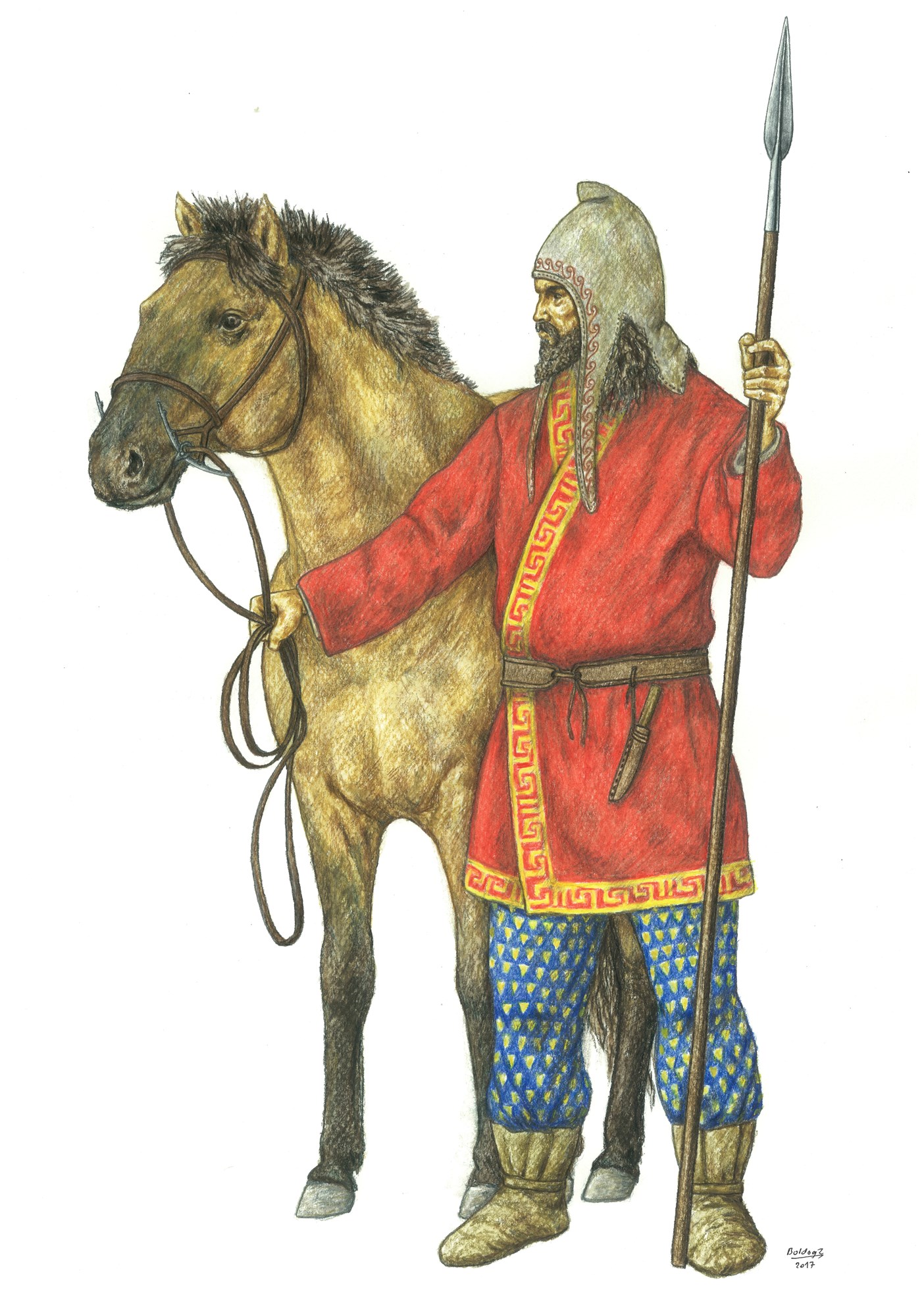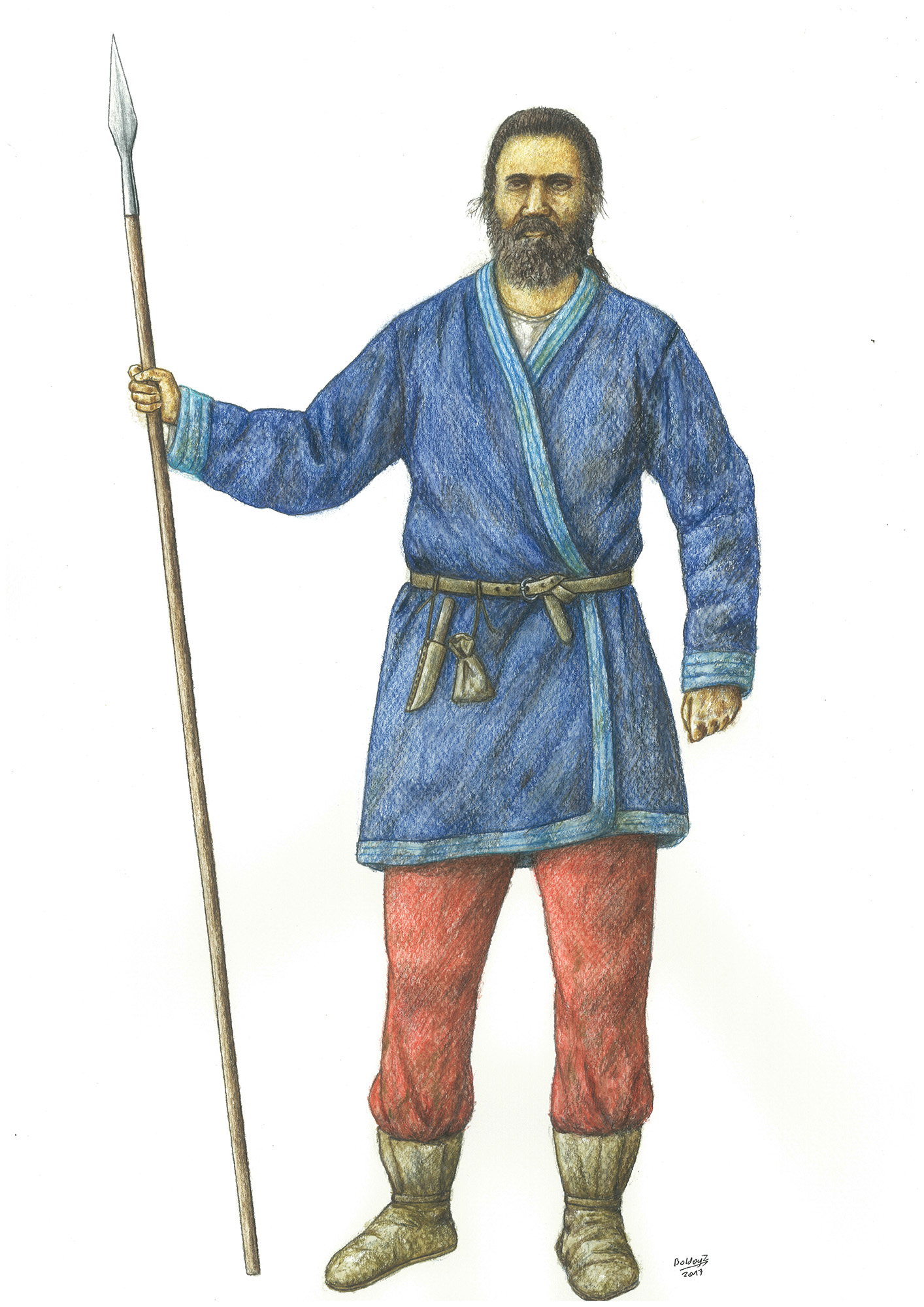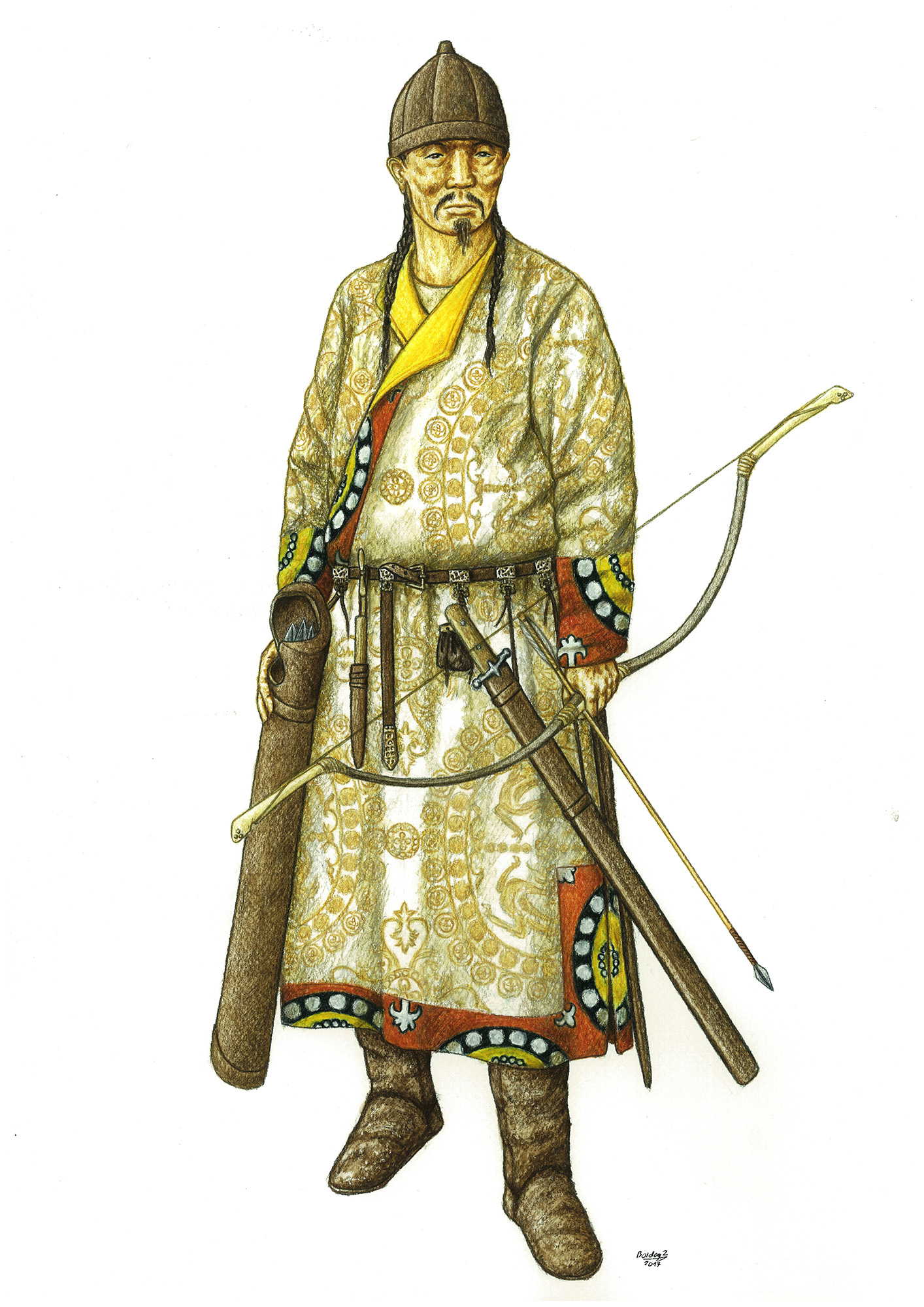Social relations
In the beginning, tools were made from stone and, later, copper, and used both as tools of daily life and weapons. The first artefacts tailored specifically to the needs of warriors appeared in the Bronze Age; the new toolkit included offensive and defensive elements (daggers, swords, spears, axes, helmets, shields, and armour). The Prescythians and the Scythians, arriving from the East in the Iron Age, introduced nomadic warfare and its toolkit (bow and horse harness), which quickly became a key to effective warfare. Celts fought mainly on foot and preferred close combat; they used iron-pointed spears, iron helmets, and wooden shields reinforced with an iron shield boss. Celtic warriors were highly esteemed members of society; their most personal weapon was a wrought iron sword with characteristic Celtic-style patterns on the blade, which they wore suspended from their belt on an iron chain. Countless interred treasures, never retrieved by their owners, mark the critical and dangerous years of the Migration Period. The coins issued by Italian rulers, found in the graves of Hungarian warriors (the people who last conquered the Carpathian Basin) are relics of their raids in Europe.
However, the archaeological record includes way more evidence of peaceful coexistence. Find assemblages from diverse periods of the Neolithic and the Copper and Bronze Ages comprise artefacts reflecting the traditions of different cultures from diverse regions. Despite in the Early and Middle Iron Ages, the Carpathian Basin was divided culturally along the Danube, with communities with Western and Eastern ties, respectively, on the two sides, tools and accessories from the ‘other side’ frequently appear amongst the finds of their settlements. And Sarmatians can also be mentioned, who once populated the lands east of Pannonia province—thus, the Pest side of the area of the capital—and, based on the numerous imported artefacts and coins in their sites, maintained intensive trade connections with the Romans.
- Reconstruction of a Scythian Period warrior based on the finds of the Soroksár-Akácos cemetery (graphics by Zoltán Boldog)
- Reconstructed attire of a 2nd–3rd century AD Sarmatian man, based on a grave unearthed at Soroksár, Vető dűlő (graphics by Zoltán Boldog)
- Reconstructed Avar male attire, based on the finds of the Soroksár cemetery (graphics by Zoltán Boldog)


